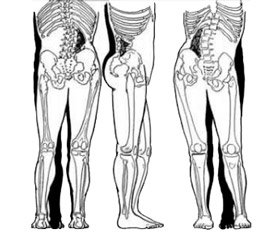Журнал «Травма» Том 16, №4, 2015
Вернуться к номеру
Analysis of clinical risks in victims with associated pelvic traumas
Авторы: Tsvyakh A.I.(1), Guriev S.E.(2)
(1) – I. Horbachevsky Ternopil State Medical University, Ternopil, Ukraine
(2) – SI “Ukrainian Scientific- Practical Center of Urgent Medical Aid and Disaster Medicine of Ministry of Public Health of Ukraine”, Kyiv, Ukraine
Рубрики: Травматология и ортопедия
Разделы: Клинические исследования
Версия для печати
Ключевые слова
Polytrauma, associated pelvic injuries, clinical risks, age, gender.
Polytrauma is an actual medical and social problem today due to high lethality. Trauma of loco-motor system is frequent component of polysystemic and multiple organs injuries. Pelvic injuries are not so frequent due to anatomical peculiarities (3-8 % or 20-37 per 100 000). But in case of polytrauma their frequency raises to 20-25 % with high mortality rates till 40 %. One can observe the concomitant injury of inner organs in 90 % of cases, predominantly of abdominal cavity and urinary tract. The main death causes the bleeding, traumatic shock and later complications are.
Due to such situation it is very important to study the factors which have influence of course of traumatic process in case of associated pelvic injuries.
The aim of our investigation to analyze the clinical result risk in patients with associated pelvic injuries, depending on the clinical nosology combinations and clinical-epidemiological characteristics of age and gender.
Materials and methods.
Retrospective analysis of 400 cases of polytrauma was done among patients of Ternopil University Hospital during 2008-2012 years. In analyzed array the males were dominated – 76.3%. All victims were divided on four age groups: till 20 years, 21-40 years, 41-60 years and older than 60 years old. The main part of array was the people of working age from 21 till 60 years old. 10.5 % were till 20 years old and 11.2 % 61 years old and older. All patients with the musculoskeletal system injury, as a component of polytrauma, we were divided into 3 groups relative to the scale of ISS (Injury Severe Score): ISS < 25 (82.0% of array or 328 persons); ISS = 26-40 (14,0%d); ISS > 40 (4.0%). The clinical-epidemiological features (age and gender) were studied and clinical-nosological forms of combinations of pelvic injury and other anatomical and functional areas.
Results and discussion.
The associated pelvic injury were fixed in 45 cases (11.25 % of array), mainly in males. The most frequent combinations of associated pelvic injuries were with skeletal, cranio-cerebral and thoracic traumas. We used like a criteria the negative (death) and positive (survival) results of traumatic process course.
As our analysis shows, associated pelvic injuries have a high risk of death, which only in case of combination with skeletal and cranio-cerebral compounds have characteristic “critical” in case of all other combinations it was catastrophic.
In case of association of pelvis injury and one more anatomic-functional area risks were 0.73-0.79; two areas – 0.81-0.96; three – from 1.30 to 2.7. Maximum was 2.91.
The clinical result risk increases with age and is more typical for men. There is a clear tendency to increase the probability of death of the victim with increase of quantity of damaged components. Affected older age groups have a significant risk of lethality even with relatively mild injuries. In case of rising of the quantity of damage components the gender has no ponderable impact for patients with polytrauma.
Conclusions.
1. Associated pelvic injuries are characterized by high clinical (critical and catastrophic) result risk of death.
2. There is a tendency to increasing of lethality with increasing of victims ‘age. Older patients have high clinical risk even in case of not so severe traumas.
3. The males have higher risk to die in case of associated pelvic traumas compared with females
4. In case of rising of the quantity of injured areas one can observe the decreasing the differences in risks between males and females.

